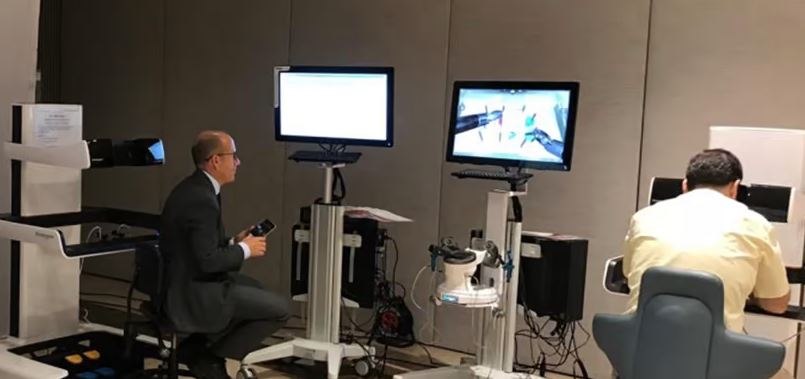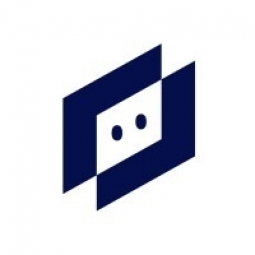Customer Company Size
Large Corporate
Region
- America
Country
- United States
Product
- LM Envision
- LM Logs
Tech Stack
- SaaS-based platform
- Cloud Infrastructure
- Virtual Networks
Implementation Scale
- Enterprise-wide Deployment
Impact Metrics
- Cost Savings
- Productivity Improvements
Technology Category
- Platform as a Service (PaaS) - Connectivity Platforms
Applicable Industries
- Education
Applicable Functions
- Business Operation
Use Cases
- Process Control & Optimization
- Predictive Maintenance
Services
- Cloud Planning, Design & Implementation Services
- Data Science Services
About The Customer
Loyola University of Maryland is a Jesuit Catholic university located in Baltimore, Maryland. It is home to 5,500 students across the main campus and three remote campuses. The Technology Services Department is the centralized provider of technology to the entire Loyola community, supporting applications, storage, security, connectivity, and all devices. The university has undergone a radical redeployment of its network, migrating from a simple hub-and-spoke topology to a flexible collection of virtual networks operating independently of each other to serve different constituents and functions. This major network change, along with an impending rollout of VoIP and the need to support new network-first facility safety devices, has led Loyola to search for an observability platform that can minimize administrative overhead and provide visibility into their environment.
The Challenge
Loyola University of Maryland, a Jesuit Catholic university located in Baltimore, Maryland, is home to 5,500 students across the main campus and three remote campuses. The Technology Services Department is the centralized provider of technology to the entire Loyola community, supporting applications, storage, security, connectivity, and all devices. The challenges of so many devices, combined with the importance of uptime and visibility, led Loyola to search for an observability platform after a radical redeployment of the university’s network. What started as a simple hub-and-spoke topology, where all services symmetrically overlaid the network elements themselves, was migrated to a flexible collection of virtual networks operating independently of each other to serve different constituents and functions. Because of this major network change, as well as an impending rollout of VoIP and the need to support new network-first facility safety devices, Loyola soon realized the mentality and capabilities of the native monitoring tools they had been using were not going to be enough. Loyola needed to minimize administrative overhead and day-to-day demands of an observability platform, as well as persistence in business continuity and disaster recovery type situations. Visibility was key to Loyola. If some or all of their services were disrupted, they didn’t want to waste precious time trying to bring those back up without any visibility into their environment. Loyola was also looking to the future when it came to its partnership with an observability platform. They were going to need to easily access not only their data but also their account team to make any changes to their evolving and growing landscape. Overall, Loyola needed a partner that would grow with them.
The Solution
Loyola found the solution they needed with LogicMonitor’s SaaS-based platform, out-of-the-box interoperability, flexible alerting, and notification delivery. LogicMonitor’s robust integrations have allowed simple and fast discovery, monitoring, and visibility of Loyola’s infrastructure, including Juniper, Palo Alto, and Aruba devices. Within minutes, Dieter and his team can see reports, metrics, and data points within their dashboards, with ease. Loyola has also leveraged LogicMonitor’s integration with third-party notification delivery mechanisms, giving peace of mind that when issues arise, the correct person will be alerted and provided the information they need to quickly resolve the problem. Loyola has partnered with LogicMonitor’s Account and Professional Services teams throughout their relationship. As their use case changes and evolves over time, they are able to add new features and functions quickly that align with their vision.
Operational Impact
Quantitative Benefit

Case Study missing?
Start adding your own!
Register with your work email and create a new case study profile for your business.
Related Case Studies.

Case Study
Revolutionizing Medical Training in India: GSL Smart Lab and the LAP Mentor
The GSL SMART Lab, a collective effort of the GSL College of Medicine and the GSL College of Nursing and Health Science, was facing a challenge in providing superior training to healthcare professionals. As clinical medicine was becoming more focused on patient safety and quality of care, the need for medical simulation to bridge the educational gap between the classroom and the clinical environment was becoming increasingly apparent. Dr. Sandeep Ganni, the director of the GSL SMART Lab, envisioned a world-class surgical and medical training center where physicians and healthcare professionals could learn skills through simulation training. He was looking for different simulators for different specialties to provide both basic and advanced simulation training. For laparoscopic surgery, he was interested in a high fidelity simulator that could provide basic surgical and suturing skills training for international accreditation as well as specific hands-on training in complex laparoscopic procedures for practicing physicians in India.

Case Study
IoT platform Enables Safety Solutions for U.S. School Districts
Designed to alert drivers when schoolchildren are present, especially in low-visibility conditions, school-zone flasher signals are typically updated manually at each school. The switching is based on the school calendar and manually changed when an unexpected early dismissal occurs, as in the case of a weather-event altering the normal schedule. The process to reprogram the flashers requires a significant effort by school district personnel to implement due to the large number of warning flashers installed across an entire school district.

Case Study
Implementing Robotic Surgery Training Simulator for Enhanced Surgical Proficiency
Fundacio Puigvert, a leading European medical center specializing in Urology, Nephrology, and Andrology, faced a significant challenge in training its surgical residents. The institution recognized the need for a more standardized and comprehensive training curriculum, particularly in the area of robotic surgery. The challenge was underscored by two independent studies showing that less than 5% of residents in Italian and German residency programs could perform major or complex procedures by the end of their residency. The institution sought to establish a virtual reality simulation lab that would include endourological, laparoscopic, and robotic platforms. However, they needed a simulator that could replicate both the hardware and software of the robotic Da Vinci console used in the operating room, without being connected to the actual physical console. They also required a system that could provide both basic and advanced simulation training, and a metrics system to assess the proficiency of the trainees before they performed surgical procedures in the operating theater.

Case Study
Edinburgh Napier University streamlines long-distance learning with Cisco WebEX
• Geographically dispersed campus made in-person meetings costly and inconvenient.• Distance-learning programs in Malaysia, India, and China required dependable, user-friendly online tools to maximize interaction in collaborative workspaces.• Virtual learning environment required a separate sign-in process, resulting in a significant administrative burden for IT staff and limited adoption of collaboration technology.

Case Study
8x increased productivity with VKS
Before VKS, a teacher would spend a lot of time showing a group of 22 students how to build a set of stairs within a semester of 120 hours. Along with not leaving the teacher much time to provide one-on-one support for each student to properly learn carpentry, it also left a considerable amount of room for error. Key information would be misinterpreted or lost as the class was taught in the typical show-and-tell way.

Case Study
Scalable IoT Empowering GreenFlex's Sustainable Growth
GreenFlex, a company that supports sustainable development, decarbonization, and energy efficiency, faced several challenges in its quest to expand its business. The company needed to deploy a robust and sustainable IoT technology to support its growth. It was crucial for them to monitor and control devices at customer sites in a safe and reliable manner. They also needed to integrate devices across a range of communication protocols and gather and act on data to meet efficiency targets. GreenFlex had previously built IoT capabilities into its digital platform, GreenFlexIQ, to monitor and manage customer sites remotely. However, they soon realized that they needed a new platform to support their ambitions. They needed a platform that could scale to connect more devices for production management and make it easier for the operations team to manage devices in the field.







